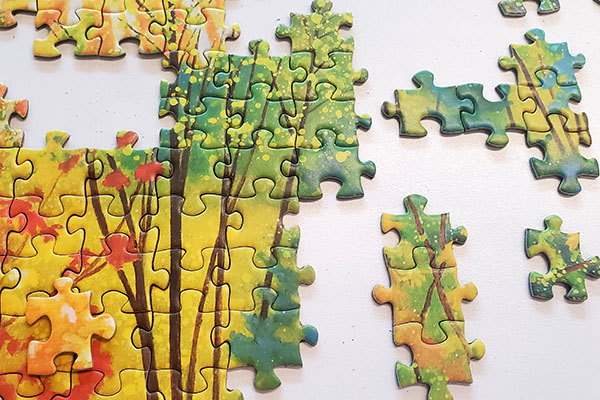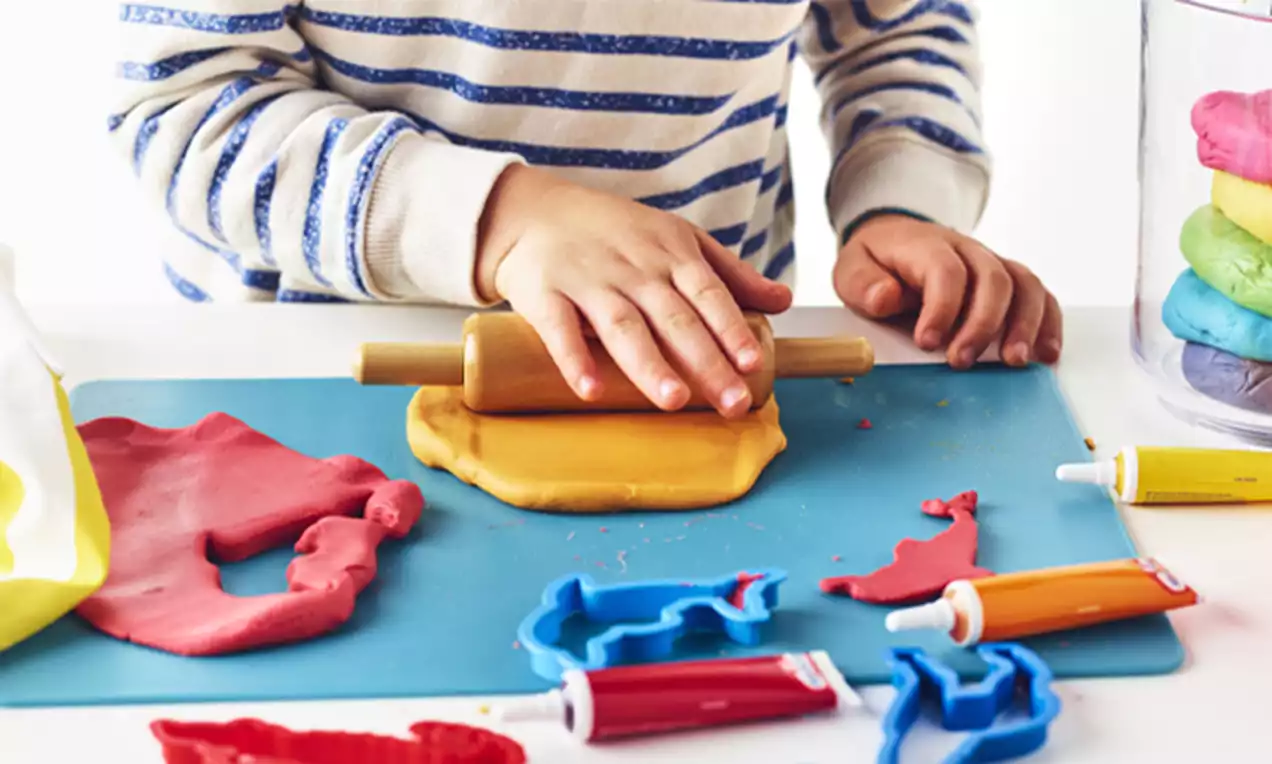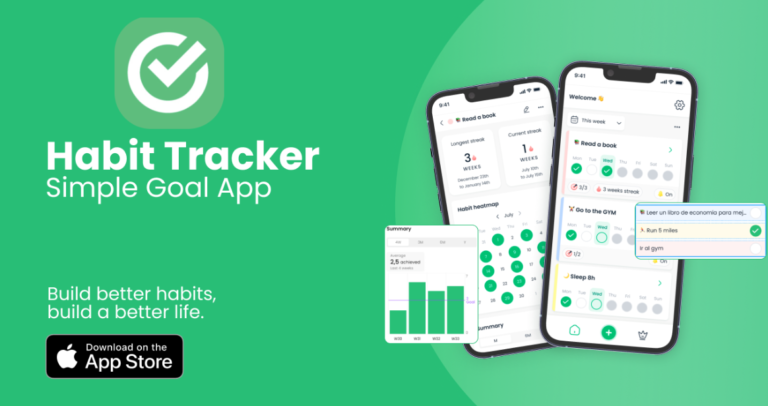10 best games for kids under 5 years old
Last Updated on May 30, 2024 by Jhonni Jets
Choosing engaging games and activities for young children is essential for their development. Play is how young kids explore the world, learn new skills, and use their imagination. The right games can boost cognitive, physical, and social-emotional growth. However, with so many options on the market, it can be difficult to determine which games are most suitable and fun for toddlers and preschoolers. This article explores 10 top choices for the best games for kids under 5 based on factors like educational value, simplicity, creativity, and enjoyment. Whether played at home or on-the-go, these games offer age-appropriate challenges and entertainment to capture their interest.
Puzzles

Table of Content
Puzzles are a wonderful first game for developing problem-solving skills. Look for chunky, chunky wooden puzzles with just a few large pieces. These make puzzles easy for little hands to grasp. Some top puzzle options include farm animal, transportation, or shape puzzles with only 2-5 pieces. As kids master simpler puzzles, they can progress to puzzles with 6-10 pieces. Puzzles teach colors, shapes, patterns and cause and effect. They also build concentration and fine motor control as kids learn to pick up and fit the pieces. Puzzles can be played on the floor or at a small table. For on-the-go fun, look for puzzles mounted on thick cardboards that prevent pieces from getting lost. Rotate a selection of easy puzzles to keep the challenge novel. Puzzles are educational yet open-ended, allowing kids to learn at their own pace.
Blocks

Wooden blocks are another quintessential toy for developing foundational skills. Large foam or wood blocks encourage spatial reasoning, cause-and-effect learning, and cooperative play. With blocks, kids can learn basic shapes, stacking, sorting, counting andCreation story blocks foster imagination. Provide a variety of block types—unit blocks, fabric squares, wood blocks, magnetic tiles—to fuel creativity. Blocks can be used to build pretend roads, houses, fences and more. They allow kids to create their own structures and narratives. Adding a few people or animal figures can expand block play into telling stories. Blocks are ideal for both indoor and outdoor use. They encourage both solitary and social play. Block play improves problem-solving, as kids must determine the best way to balance or stack their structures. The open-ended nature keeps block play engaging throughout the preschool years.
Pop-Up Toys

Interactive pop-up toys offer multisensory experiences that captivate young minds. Look for durable, colorfully illustrated pop-up books with a variety of tabs, sliders, or flaps for little hands to manipulate. As pages are lifted or tabs are pulled, new shapes, images, or scenes emerge. This invites discovery through visual and tactile stimulation. Pop-up toys require problem-solving to determine how all the moving pieces fit together, fostering spatial reasoning. They build fine motor skills as tiny fingers slide tabs and turn dial. Interactive books also build language skills, as kids can be encouraged to describe what they see on each page. Beyond books, seek pop-up playsets with farms, vehicles, or wild animals. These encourage open-ended pretend play. Rotating a selection of pop-up toys maintains interest. The surprise and delight of pop-ups boosts confidence and a joy of learning.
Stacking Toys

Stacking rings, blocks, or cups are an age-old classic beloved by toddlers. As one of the first STEM toys, they introduce fundamental concepts like size, shape, and numbers. Stacking toys improve dexterity as kids learn to carefully balance one piece atop the other. they build confidence as children proudly display their tall, wobbly towers. Stackers often feature bold colors and shapes, capturing visual interest. Look for sets that progress from easy, large rings to smaller elements with more complex designs. This keeps the task challenging without being frustrating. Stackers encourage problem-solving as kids determine the best sequence and placement of each object. The toys are great for individual play or friendly competitions between siblings or friends to build the tallest stack. Stackers boost mathematical awareness of sorting, sequencing and quantitative comparisons such as more/less, over/under. Their small size means stacking toys travel well for playtime anywhere.
Playdough

Playdough is one activity that should have a regular place at any preschooler’s activity table. The tactile pleasure of squeezing, rolling, patting and molding playdough engages all the senses. It promotes fine motor skills, hand-eye coordination and dexterity as tiny fingers manipulate the pliable dough. Beyond physical skills, playdough encourages problem-solving and creativity as kids fashion shapes, objects or scenes out of their imaginary creations. Playdough fosters early STEM awareness, as attributes like number, volume, and geometry are explored. It provides a stress-free outlet for expressing emotions or imaginative storytelling through modeling. Non-toxic playdough is safe for independent as well as cooperative play. Kids can learn colors by mixing dough hues or work together to build more elaborate projects. Playdough presents an open-ended activity that nurtures self-expression and builds preschooler confidence.
Shape Sorters

Shape sorters are developmental toys featuring cut-out geometric molds that teach visual pattern recognition and spatial reasoning. Basic sorters have just a few large shapes like circles, squares and triangles. More complex designs add rectangles, ovals, stars or other forms. Sorters come in various sizes, from handheld stackable boards to larger floor/tabletop sets. This allows the complexity to grow with developing skills. At a foundational level, sorters encourage matching shapes by color or form. They boost concentration as kids learn to carefully guide each piece into the correct position. Sorters build fine motor control and hand-eye coordination too. As skills progress, sorters expose preschoolers to rudimentary geometry, sorting logic and spatial concepts like in/out, over/under. Sets that light up, play music or contain shape characters add engagement. Whenever sorted successfully, children feel proud sense of accomplishment.
Pretend Play Kits

Imaginative pretend play is vital for social-emotional development. Kits providing realistic props foster make-believe and roleplaying. Seek well-crafted sets like doctor/vet boxes filled with play stethoscopes, bandages and clipboards. Dress-up kits with costumes, hats and accessories allow kids to assume new roles. Toy kitchens, cash register, tool sets and more spark creative scenarios. Props help kids develop narrative skills by acting out familiar scenarios or inventing fresh storylines. Fantasy play allows preschoolers to safely experience big feelings and work through life’s challenges. These activities build vocabulary and language complexity too. Kits containing both human and animal figures expand imaginative stories. Shared pretend roles between siblings or friends promote cooperation and perspective-taking. While props guide the games initially, over time they empower creative independence and expression as kids put their own spin on play.
Musical Toys
Musical toys tap into a child’s natural love of rhythm and sounds. Classic options include piano/keyboard mats that play notes when keys are pressed; these also build basic music foundations. Push-and-pull toys with looping tunes inspire movement and dancing. There are also roleplay instruments like smallrecorders, drums or cymbals to spark fake performances. More electronic selections might feature favorite characters singing songs or stories with the press of a button. All varieties cultivate early music exposure through independent and social jam sessions. The multisensory fun strengthens listening skills, coordination and turn-taking too. Familiar tunes act as effective soothing tools too. Toy recorders, harmonicas or other portable sound makers allow the music to continue in strollers or cars. Musical activities bridge cognitive development with pure delight and expression through melody.
Board Books

Even the youngest bookworms can discover the joy of reading with sturdy board books. These include short, simple texts paired with clear color photographs on thick cardboard pages. Toddlers tend not to sit still for long read-alouds, so these books allow independent exploration. Children can turn pages themselves to learn sequence and cause-and-effect. High-contrast images capture attention while language exposure builds pre-literacy. Words and objects become more familiar through repetition. Look for books with interactive elements too, like tabs to lift, holes to peek through, or rhythmically repeating texts. Lacing, peekaboo and nature themes engage pint-sized readers. Beyond sharing books, these durable selections withstand solo perusal in strollers or during tummy time. Book handling strengthens grasping and fine motor skills. Independent literacy play cultivates confidence and fosters imagination too.
Building Toys

Toy bricks, blocks and connectors inspire construction fun and foster spatial skills. Chunky foam or wooden building pieces introduce basic shapes in a gnawing-proof form. Look for sets containing various sized rectangles, squares, triangles and cylinders. These allow stacking in multiple configurations or connecting side-by-side. As fine motor skills progress, move onto sturdy, interlocking plastic bricks perfect for engineering tiny structures. Some incorporate gears, axels and batteries for motor-powered play too. Connector toys like Magna-Tiles or wooden pattern blocks provide increased challenges in assembling multi-piece designs. Creative building supports spatial reasoning, language development and cooperative group play. It allows problem-solving through trial and error. Rotating blueprint ideas or setting loose parameters inspires imaginative scenarios. Construction hobbies are fulfilling for kids and present so much enrichment through open-ended learning.
Conclusion
The games highlighted offer multi-sensory experiences engaging young brains through problem-solving, cooperation, creativity and hands-on exploration. While providing endless learning disguised as play, the selections incorporate flexibility for varying developmental milestones. No matter your child’s interests, there is an activity inspiring wonder at this stage. A mixture of board books, puzzles, playdough and other options stimulates all domains. While technology has its place, simple toys utilizing imagination remain important for building social-emotional skills. Exposing kids to different types of games and letting them play at their own pace nurtures enjoyment of learning through activity. Rotating available selections maintains novelty and discovery. Overall, the focus is letting preschoolers have fun while growing fundamental aptitudes.








